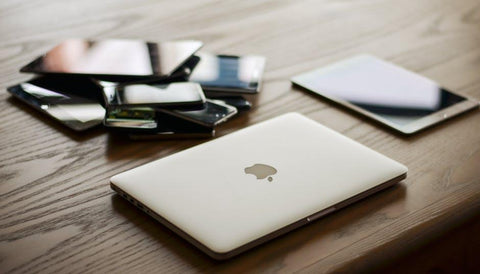There is no doubt that our exposure to blue light is on the rise.
We are also making more use of devices like smartphones and laptops with displays that emit high levels of blue light; alongside the increasing use of LED lighting. As technology continues to advance, blue light exposure is likely to increase. Over-exposure to blue light has been proven to have a number of adverse effects on our health including interrupting our sleep cycle.
Ocushield investigates a popular solution to this blue light conundrum - blue light filtering apps.

Blue light filtering software is arguably the most commonly used method of reducing blue light exposure - and with reason. There are apps for almost every kind of device and every type of platform including Windows, Apple and Android; readily available and easy to use. Despite their popularity, there are still some varying opinions regarding whether or not they are as effective as advertised when it comes to blocking blue light. To answer this question, you must first be clear on how blue light filter apps actually work.
How Blue Light Filter Apps Work
The way these apps ‘filter’ blue light is by shifting the colour tone of what is being displayed to the warmer parts of the colour spectrum like yellow, orange or red. The result is that blue light emitted is significantly reduced and the screen of your device acquires a yellow, orange or red sheen. These apps shift the colour tone of your screen in two main ways:
The colour transform approach – The software tools that use this method bypass the operating system completely and directly act at the video driver level to control the intensity of the major channels of the display (red, blue and green). By directly controlling what colours are to be drawn on the screen, these apps can then shift the colour towards warmer tones and shut off pixels emitting blue light.
The transparent overlay approach – In this approach, the app creates a transparent layer over your display to reduce the amount of blue light emitted by your screen. This transparent overlay is usually yellow, orange or red depending on the particular app and the intensity you select. Just remember that the overlay isn’t a physical filter but a software-rendered layer that seemingly serves the same function.
Most blue light filter apps out there utilise a transparent overlay to combat blue light while only a few apps like f.lux bother with the colour transform approach. In both methods, relatively the same amount of blue light is reduced but the transparent overlay approach tends to considerably reduce the contrast of your display. This can make reading on your screen harder and strain the eyes of those susceptible. On the other hand, the colour transform method is much better at preserving the contrast of your display screen.

Are Blue Light Filter Apps Effective?
Yes, blue light filter apps are effective, but only to a certain extent. In a nutshell: by shifting colour profiles from blue to other shades, they reduce the amount of blue light reaching your eyes.
However, these software tools are simply incapable of blocking all the blue light emitted by the screens of your gadgets. There’s still the LED backlight emitting blue light as part of its white light, which these apps can’t do anything about. So if you are particularly sensitive to blue light and these apps aren’t doing enough, a physical filter may better suit your needs.
Secondly, the distortion of colour may contribute to eye strain; swapping out one problem for another. Blue light filtering apps are also known to drain the battery of your device - which is less than ideal if you don’t have immediate access to a power supply.
Finally - the blue light conundrum is not limited to just digital devices. Fluorescent lighting can emit just as much blue light as your smartphones and laptops, if not more. That’s why blue light filter apps are only part of the solution even if they are quite good at what they do. To protect your eyes from all sources of blue light, you may be better off investing in anti blue light glasses that will effectively filter out blue light.
How we reviewed this article:
Ocushield has strict sourcing guidelines and relies on peer-reviewed studies, academic research institutions, and medical associations.
- Blue light has a dark side www.health.harvard.edu/staying-healthy/blue-light-has-a-dark-side
Our experts continually monitor the health and wellness space, and we update our articles when new information becomes available.
Written By
Dhruvin Patel | BSc Hons, MCOptom, Optometrist
Edited By
Omba Kumwenda | BA, MEng
Medically Reviewed By
Asad Hamir | BSc Hons, Optometrist
Copy Edited By
Tara Tadlock | MA

Leave a comment